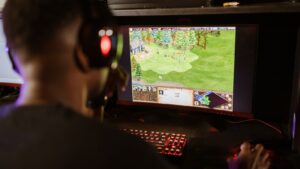[ez-toc]
In the vibrant world of Pokémon fan games, Pokémon Essentials stands out as a cornerstone for creators. This powerful toolkit allows enthusiasts to craft their own Pokémon adventures, complete with intricate storylines and unique characters. Among its many features, player sprites are crucial for bringing these custom games to life, providing visual representation and personality to the player’s character.
Understanding the importance of player sprites can elevate a fan game’s appeal, making it stand out in the bustling Pokémon community. As creators continue to push the boundaries of creativity, player sprites remain an essential element in crafting unforgettable gaming experiences.
Understanding Pokemon Essentials
Pokemon Essentials serves as a comprehensive toolkit for creating Pokémon fan games, integrating versatile features for developers. It offers a framework that manages game mechanics, including battle systems, Pokémon data, and map creation. Developers rely on this platform for its robust customization capabilities.

Key features include ease of use and accessibility. New and seasoned developers benefit from its user-friendly interface and extensive documentation. It simplifies the game development process by providing templates and automated functions.
Sprite customization is a central component of Pokemon Essentials. Player sprites, representing characters in the game, can be tailored to reflect various styles and themes. This flexibility enhances the creativity within fan games, making them engaging and distinct.
Pokemon Essentials Player Sprites
Player sprites are crucial graphical elements in Pokémon games, including those created with Pokémon Essentials. They visually depict the player’s character and contribute significantly to the gaming experience.
Definition and Role

Player sprites are 2D images representing the player’s avatar as they navigate the game world. In Pokémon Essentials, these sprites serve as the visual representation during various in-game activities, like exploring environments and engaging in battles. Each sprite consists of different frames, enabling animations for movements and actions. This dynamic portrayal enhances player engagement and immerses them in the virtual world.
Importance in Game Design
Player sprites are key to a game’s visual identity. They allow creators to infuse unique stylistic elements, making each Pokémon fan game stand out. Designers leverage these sprites to reflect diverse personas, cultures, and styles, creating a relatable experience for diverse audiences. Moreover, consistent and appealing sprite design reinforces the game’s narrative and aesthetic coherence, crucial for captivating player interest.
Features of Pokemon Essentials Player Sprites
Pokemon Essentials player sprites offer numerous features that enhance creativity and gameplay. They provide an interactive layer that connects players deeply with the game’s environment and characters.
Customizability

Player sprites in Pokémon Essentials are highly customizable. Developers can create unique avatars by altering sprite colors, sizes, and outfits, accommodating diverse character backgrounds. Custom tools within Pokémon Essentials streamline the modification process, allowing for detailed expressions and consistent in-game appearance changes. Custom animations offer opportunities for dynamic character movements, contributing to an engaging player experience.
Variety and Styles
A broad variety of styles enrich Pokémon Essentials player sprites. Developers can choose from pixel art to more modern designs, fitting the desired game aesthetic. The extensive palette includes various regional and thematic outfits, enhancing authenticity and player connection.
How to Implement Player Sprites
Implementing Pokémon Essentials player sprites enhances the visual appeal of fan games. Understanding the process ensures a cohesive integration into the game world.
Basic Steps
- Sprite Selection: Choose or design sprites matching the game’s aesthetic. Ensure consistent style and palette across animations.
- Sprite Sheet Arrangement: Organize sprite sheets, including walking, running, and other necessary animations, in a grid format for easy coding.
- Script Integration: Incorporate sprites into the game by updating the script to reference specific sprite sheets, ensuring correct display in various scenarios.
- Testing: Conduct thorough testing to verify smooth transitions and animations, confirming correct visual representation.
By leveraging the toolkit’s customization options and extensive resources, creators can design unique avatars that resonate with players and enhance the game’s narrative depth. The ability to incorporate diverse styles and animations not only enriches the visual experience but also strengthens the connection between the player and the virtual world. As developers continue to explore the potential of Pokémon Essentials and its player sprites, they contribute to a vibrant community that thrives on creativity and innovation, ensuring the enduring appeal of Pokémon fan games.

Leave a Reply